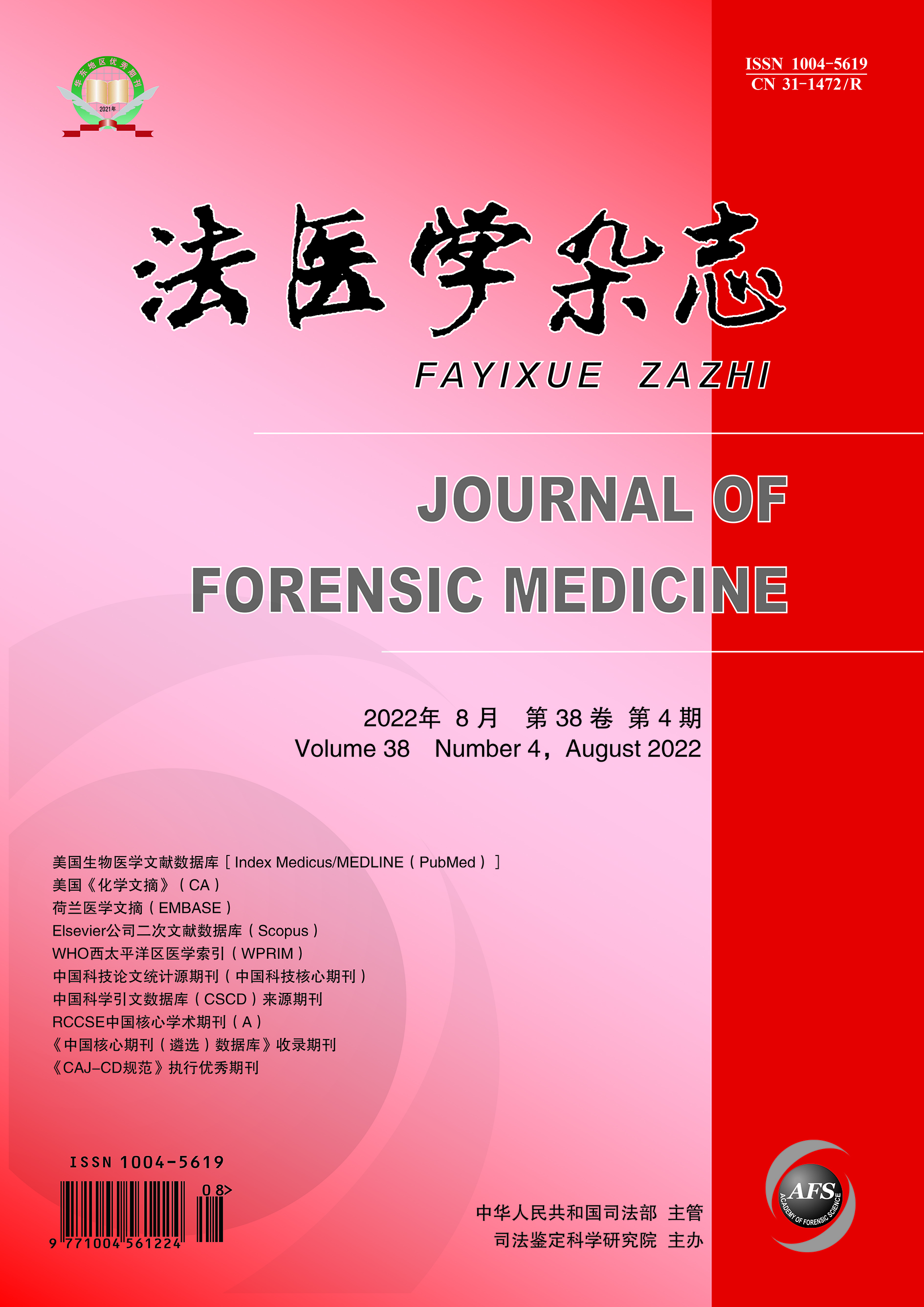Objective To analyze the case, scene and forensic pathological characteristics of sudden unexpected death in epilepsy (SUDEP), to provide a practical basis for forensic identification. Methods A total of 9 autopsy cases of SUDEP were collected. The basic information of the cases, the scene characteristics, the forensic pathological changes, the common drugs and antiepileptic drug test results, and pericardial fluid biochemical test results were analyzed. Results All of the 9 cases were male epilepsy patients died during sleep at night, the age of death was (37.1±8.6) years, and the course of epilepsy was (21.3±5.6) years. Six corpses were in prone position and three in left lateral position. The hemorrhage of the sternocleidomastoid muscle, sternal thyroid muscle and sternohyoid muscle were found with 8 cases, 5 cases and 4 cases, respectively, all of them were unilateral. Six cases had bilateral hemorrhage of pectoralis minor muscle. Brain edema, phagocytosis of frontotemporal neurons and gliosis, cardiac fibers bend in wavy patterns and eosinophilic staining enhancement, pulmonary edema, pulmonary congestion, alveolar hemorrhage, pulmonary small bronchiole wall shrinking, tubular proteinuria and pancreatic parenchymal hemorrhage were the common histopathological changes. The biochemical test results of pericardial fluid indicated that there were myocardial ischemic damage. Conclusion Young male, early onset, long course of disease, sleep in the prone position, poor drug compliance or combination, epileptic seizure may be the risk factors of SUDEP. Cardiac dysfunction and respiratory depression might be the main death mechanism of SUDEP.


